Global Markets Navigate Uncertainty: US Stocks Retreat, Gold Faces Challenges, and Currencies Respond Amidst Shifting Economic Dynamics | Daily Market Analysis

Key events:
- USA - ADP Nonfarm Employment Change (Dec)
- USA - Initial Jobless Claims
- USA - S&P Global Services PMI (Dec)
- USA - Crude Oil Inventories
The US stock indices concluded the second trading session of the year with additional declines, driven by extended profit-taking on Wednesday. This downturn followed a robust finish to 2023, and despite the release of minutes from the Federal Reserve's December meeting, the markets remained subdued.
Notably, the S&P 500 index marked its first instance of starting the year with consecutive declines since the three-session skid at the beginning of 2015. Additionally, this represents its most significant two-day percentage decline since late October.
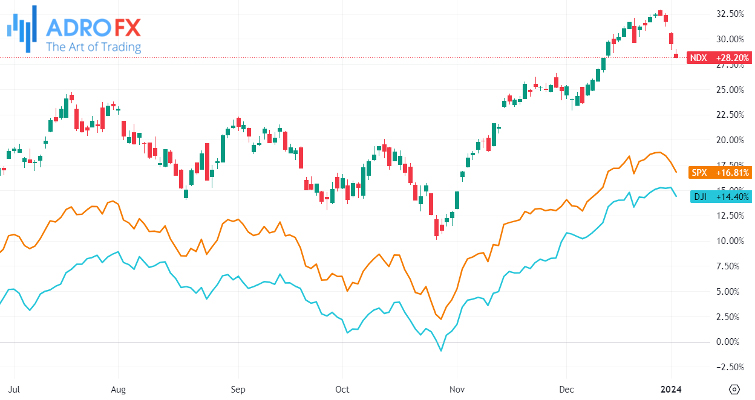
This reversal contrasts sharply with the impressive performance of all three major Wall Street benchmarks in the final months of the previous year. The S&P 500, in particular, approached its all-time closing high last week, fueled by investor optimism driven by signs of easing inflation and expectations of an aggressive rate-cutting schedule.
However, caution has prevailed among investors in 2024, given the anticipated shift in the US central bank's policy towards rate cuts. Concerns focus on the timing and pace of these potential cuts. While the Federal Reserve is widely expected to maintain rates in January, market traders have factored in a 67% likelihood of a 25 basis point rate cut in March, according to CMEGroup's FedWatch tool.
Insights from the released Fed minutes revealed policymakers' growing confidence in controlling inflation, noting diminished "upside risks" and expressing worries about the potential harm from an "overly restrictive" monetary policy on the economy. However, the minutes did not provide clarity on when rate cuts might commence.
Gold prices in Asian trade experienced a slight increase on Thursday but remained below crucial levels, as the dollar rebounded amid increasing uncertainties about the exact timing of the Federal Reserve's initiation of interest rate reductions.
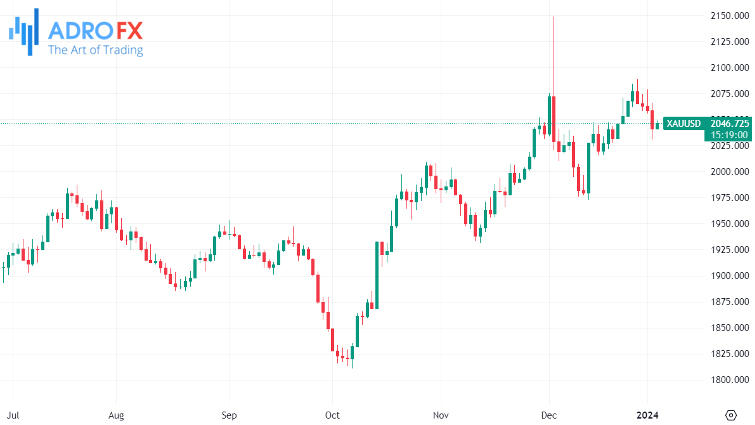
Investors remained cautious about buying assets outside the dollar due to anticipation of significant nonfarm payrolls data, posing additional challenges for non-yielding assets like gold.
The precious metal had enjoyed a robust surge in the final days of 2023, fueled by growing optimism that the Fed might start cutting rates as early as March 2024. However, at the onset of the new year, gold faced some profit-taking, coupled with a slight reduction in expectations regarding early rate cuts by the central bank.
Despite the initial weakness in 2024, gold still maintained a remarkable over 10% gain throughout 2023. The outlook for the yellow metal remains positive, benefiting from expectations of easing interest rates this year, as higher rates increase the opportunity cost of purchasing bullion.
In the currency markets, the Japanese Yen recorded its third consecutive day of decline on Thursday, reaching a fresh two-week low against the US Dollar as the European session approached. Recent data revealed a significant contraction in factory activity in Japan during December, marking the sharpest decline in 10 months. This downturn was exacerbated by a powerful 7.6 magnitude earthquake on New Year's Day, further undermining the JPY.
Conversely, doubts surrounding early interest rate cuts by the Federal Reserve provided support to US Treasury bond yields, acting as a tailwind for the Greenback and the USD/JPY pair. Despite expectations of a potential shift in the Bank of Japan's stance and a softer risk tone, limiting losses for the JPY, caution is warranted for bullish traders as uncertainties persist.
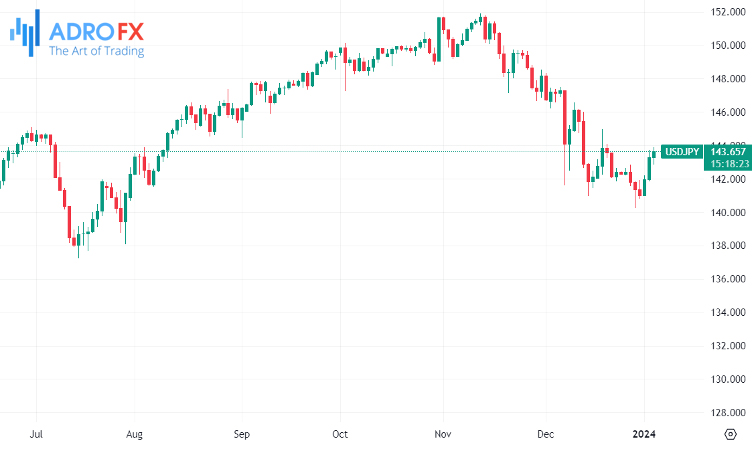
The Australian Dollar is grappling with challenges as it faces a continued decline on Thursday. The AUD/USD pair is experiencing downward pressure due to prevailing risk-off sentiment and a generally bearish session in the commodity complex. The softer Judo Bank Purchasing Managers Index (PMI) data is contributing to the negative outlook for the Aussie Dollar.
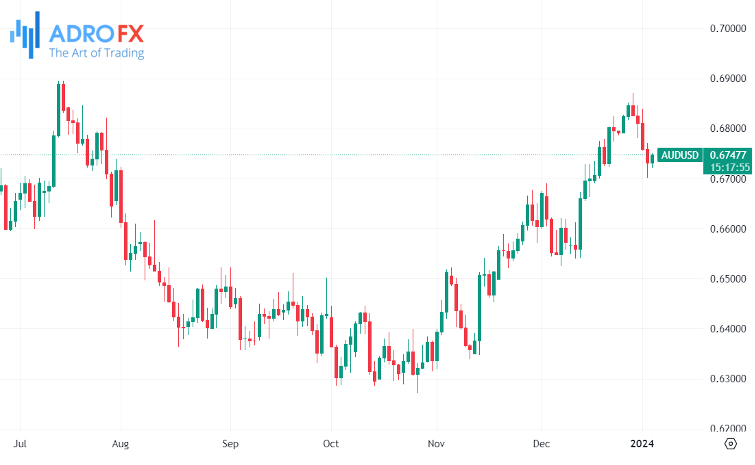
Despite the headwinds, the AUD may find some support from the improved Chinese services data. The Caixin Services PMI for December rose to 52.9, surpassing expectations at 51.6 and the previous reading of 51.5.
However, the domestic scenario for Australia is less optimistic, with the latest Judo Bank Services PMI indicating a contraction in the services sector in December. The index posted a reading of 47.1, falling short of market expectations that it would remain consistent at 47.6. Additionally, the Composite PMI declined to 46.9 from the previous figure of 47.4, marking the fastest pace of services contraction since the third quarter of 2021.
In contrast, the US Dollar Index continues on a positive trajectory, bolstered by improved United States Treasury yields. The positive momentum is further supported by the enhanced ISM Manufacturing PMI report, which showed an increase to 47.4 in December, surpassing the market consensus of 47.1.
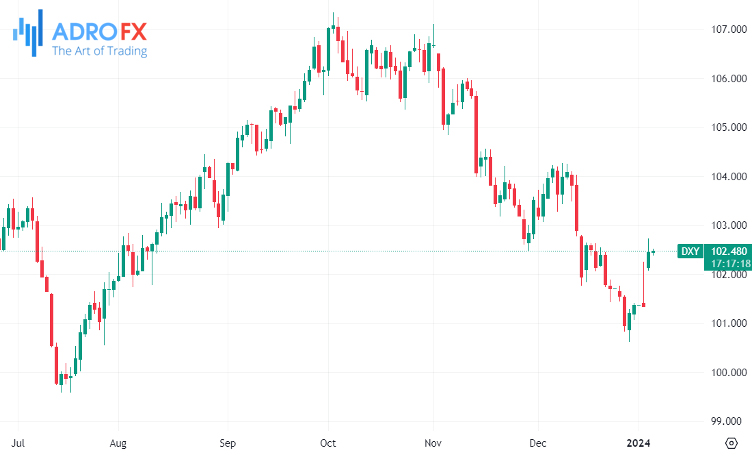
However, JOLTS Job Openings contracted to 8.79 million, falling short of the expected figure of 8.85 million in November. Traders are eagerly awaiting US labor market data releases, including ADP Employment Change and Initial Jobless Claims.

Shifting to the cryptocurrency market, Bitcoin prices experienced a decline on Thursday, impacting the entire crypto market. The sudden drop was attributed to a report from Matrixport that initially took a negative stance on Bitcoin's price and ETF approval. However, the same report later countered itself, asserting that BTC was headed to $50,000, contributing to a degree of uncertainty among investors.









